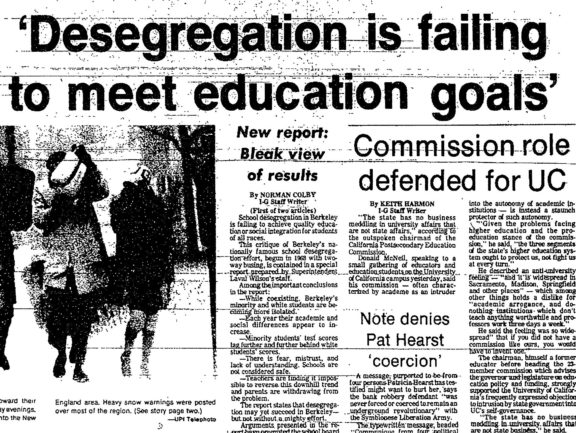A 1976 report from the Berkeley superintendent’s office, written as part of a grant proposal to receive $463,000 in federal funds, dropped as something of a bombshell in educational circles. For the center-right Berkeley Gazette, it was interpreted as a clear recognition, on the part of the school district, that its desegregation initiatives had neither succeeded, on an academic level, in narrowing the gap between black and white students, nor, on a social level, in substantively bringing together students from different backgrounds. (It should be noted that the Oakland Post, which served the local black community, interpreted the report differently.)
The Berkeley Gazette noted that the report identified “a subtler and more serious form of isolation” that was now present among Berkeley public school students: an “academic isolation [that] gives rise to and is aggravated by physical and sociological isolation.” This isolation was connected, in turn, to the development that “minority students’ test scores lag[ged] further and further behind white students’ scores.”
The report went still further, tying this academic isolation to the demands put upon teachers struggling with newly diverse classrooms. It was, the report suggested, the product of “expanded diversification” that “makes it impossible for most teachers to ‘appropriate in any systematic fashion the new skills in individualized instruction, diagnosis, prescription and classroom management’ which are needed for success.”
The report also suggested that busing might be linked to “the decline of parent involvement and support,” both because of the greater geographical distance between families and schools and because of the greater “divergent backgrounds of parents,” which were thought to have kept them from supporting the school more directly than they would have in the past.
